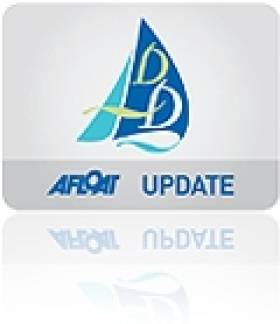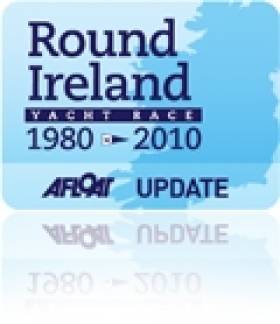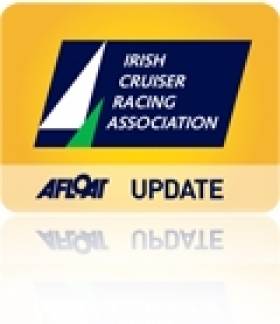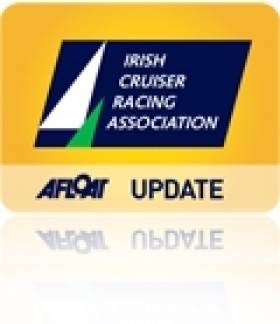Displaying items by tag: ISORA
Dun Laoghaire Announces Debut of Two Handed Fleet for Volvo Regatta
Two handed IRC racing makes its debut in July's Volvo Dun Laoghaire Regatta organisers have confirmed this week. Up to six boats have expressed interest in the new intiative and the organisers say the class will race over a mix of coastal and windward leeward courses. It's an exciting development for the regatta that is already receiving a flow of entries 11 weeks ahead of the entry deadline.
Double handed Class captain Olivier Prouveur of the National YC says boats that have expressed an interest so far are the regular ISORA participant Mojito from the UK, Team Windmill (J109), JBellino (J-122), Dinah (Barry Hurley's modified JOD 35 with which he won his class in the OSTAR 2009) and Oystercatcher (second in the two-handed class in the Round Ireland race).
Other boats are also likely now that the regatta has confirmed the class start, according to Prouveur. The hope of course is others, such as round Ireland winners Psipina Paddy Cronin and John Loden or Alchemiste Michael Murphy and Alex Voye might also be interested.
Dun Laoghaire to Dingle Race 2011 is Launched
The possibility of an Open 40 entry plus a new white sail division are just some of the developments for the tenth Dingle Skellig Hotel Dun Laoghaire to Dingle Race. Over 50 (SCROLL DOWN FOR PHOTOS BY MICHAEL CHESTER) gathered at the National YC in Dun Laoghaire last night to hear local TD and the Minister for Sport, Tourism and Culture Mary Hanafin give a ringing endorsement for the unique 320-mile offshore race when it sets sail on June 11th. A notice of race and entry form is available for download below.
The last race attracted 39 entries and a course record was set by Michael Cotter's Whisper. This year organisers Martin Crotty and Brian Barry along with Dingle Harbour master Brian Farrell are confident that they will break the 40 boat barrier. They may well be right as the event has been specifically timed to bring Dublin boats to the south coast for ten days of racing at the ICRA Nationals in Cork Harbour and the Sovereigns Cup the following week in Kinsale.
The event is also benefitting from inclusion in this year's ISORA calendar.
Present last night were represntatives from the major Bay clubs, including Breda Dillon from Howth YC and Fintan Cains of ICRA. Peter Ryan of ISORA, who is also the National YC commodore spoke about plans to develop off shore sailing and the club's plans to welcome the international Figaro offshore fleet in August.
Solo sailor Mick Lidddy who is making a bid for an Irish entry into the race was also in attendance.
SCROLL DOWN FOR LAUNCH PHOTOS BY MICHAEL CHESTER
Afloat coverage of the 2009 Race is HERE
ISORA 2011 Preview
The offshore body has also changed the scoring of each race to the High Score system and it will apply weightings for those qualifying races depending on the complexity of the race. The aim is to better reward the winner and participants of longer races with bigger fleets.
To provide opportunities for those boats who have not been winning to win prizes and trophies, it was also agreed to create a "Silver" fleet in both Class 1 and Class 2. The selection of boats to enter the "Silver" fleet for 2011 will be based on their performance in 2010. The success of these new classes will depend on maintaining the number of boats entering and racing at least at last year's numbers.
Sadie Phelan is First Lady President of Wicklow Sailing Club
Round Ireland organiser, Wicklow Sailing Club has elected its first Lady President in the 60th anniversary year of the club.
Long time resident of Wicklow, Sadie Phelan, has been very involved in many roles in the club previously, having served as its Honorary Secretary for several years. Phelan also served as Wicklow SC ISORA representative as well as organising many fundraising and social events including the Round Ireland Prizegiving dinners.
This is a great honour for Sadie and her family and she will be a worthy ambassador for the members of WSC with her wide circle of sailing friends from both sides of the Irish Sea.
2011 ISORA Race Schedule Published
ISORA has published its race schedule for 2011 and to win the overall series next year boats must complete 4 of the 6 "qualifying". Points for the overall series will then be taken from the Best 5 results from ALL the races completed.
The offshore body has also changed the scoring of each race to the High Score system and it will apply weightings for those qualifying races depending on the complexity of the race. The aim is to better reward the winner and participants of longer races with bigger fleets.
To provide opportunities for those boats who have not been winning to win prizes and trophies, it was also agreed at last weeks agm to create a "Silver" fleet in both Class 1 and Class 2. The selection of boats to enter the "Silver" fleet for 2011 will be based on their performance in 2010. The success of these new classes will depend on maintaining the number of boats entering and racing at least at last years numbers.
The NOR and Entry forms for ISORA 2011 will be published later this month.
The Race Programme is attached for download below.
Black Tie Finale to ISORA Season
Irish Sea Offshore sailing Chief Peter Ryan has circulated the Notice and Agenda for next Saturday's ISORA AGM at the National Yacht Club and told Ireland's biggest band of offshore crews to wear dinner jackets so they can vote on next year's sailing, watch Ireland play South Africa and attend the formal ISORA prize giving dinner all at the same waterfront venue.
The AGM takes place at 14.00 at the NYC. The rugby match is on at 17.30 and Ryan says if sailors are interested they can dress up in your tux and watch the match.
Immediately after the match at 19.45, the pre-dinner drinks reception will be held in the JB Room of the Dun Laoghaire club with complimentary sparkling wine and classical music by the Neptune Trio.
Dinner will be at 20.30 sharp to enable the prize giving to take place at 22.00 and finish of ceremonies by 23.00 latest. After this sailors can relax or dance the night away at the ISORA disco.
AGM papers are attached for download.
Marinerscove Takes Narrow Lead in 'Boat of the Year' Opinion Poll
Marinerscove leads Afloat's sailing Boat of the Year opinion poll that has attracted over 1700 votes to date. After 20 days of voting the lead has changed several times in the fun poll and early leader Erisslanan, who shared boat of the week with Mariners at Cork week is now in third place on 227 votes, some distance behind ISORA winner Raging bull on 607 votes. 81 votes clear ahead is the Crosshaven boat that also bagged the British IRC title this year. Dave Dwyer's Marinerscove was of course also the middle boat in the victorious Irish Commodores Cup team in August. The ICRA boat of the year award will be awarded on November 13th at the Cruiser Racer conference in Carrigaline. You can vote by using the poll on the left hand side of Afloat's home page.
2011 ISORA Scoring and Race Programme Up for Debate
The first is a proposed race schedule for 2011. Due to the number of races and the large variation in the distance and complexity, Ryan is proposing to identify some of the main races as those that qualify for the Overall ISORA Series - "The Wolf's Head Trophy". The other races will qualify for another lesser series that involves all races. Trophies and prizes will be awarded for all races irrespective of status.
The second issue is the proposed use of the High Score system and incorporating a difficulty coefficient to reflect the type of race involved. The use of the high scoring system will also be preferable when dealing with a series where many boats will not do most of the races and the variation in the fleet numbers can be significant.
Stephen Tudor of PSC has used the results from 2010 to illustrate the proposed system and these are attached below. Unfortunately (or fortunately) in the example the places of the top boats are generally unaltered but this is due to the fact that the top boats did most or all the races.
Ryan also says he has contacted RORC and they have agreed in principle to accept any ISORA race of over 75 miles and incorporating a night passage as a qualifier for next year's Fastnet Race.
The main purpose of the exercise is to encourage boats to do as many of the races as possible but not the penalise them too much for races missed. It is also to reward those boats more that win in large fleets over a win in a smaller fleets. Day races will be used to encourage and entice more new entries to ISORA in 2011.
The Race Schedule and Scoring System will be agreed at the AGM.
Offshore Boss to Address ICRA Conference
Irish Sea Offshore Racing (ISORA) Chairman Peter Ryan is to address next month's Irish Cruiser Racer (ICRA) conference in Carrigaline, Co.Cork. The National YC commodore will speak on the promotion of offshore racing and how in the course of a few seasons Ryan has rekindled a section of the sport that had been in decline on both sides of the Irish Sea.
The Conference takes place on Saturday, November 13th at Carrigaline Court Hotel. The day-long conference chaired by Commodore Barry Rose with two sessions 11-1 and 2-4pm will take in all aspects of cruiser racing including how Ireland won this year's Commodores Cup. A special event is being arranged to mark the Cup coming to Ireland for the first time.



























